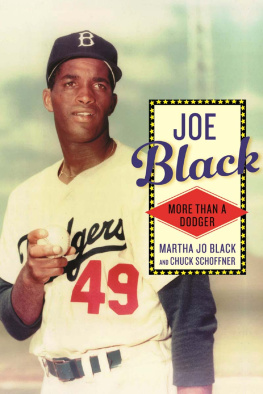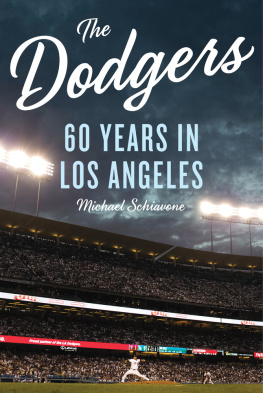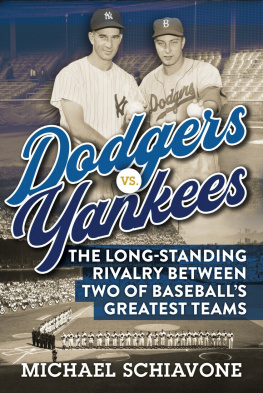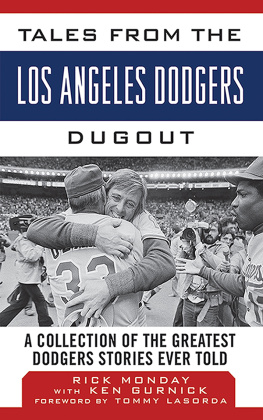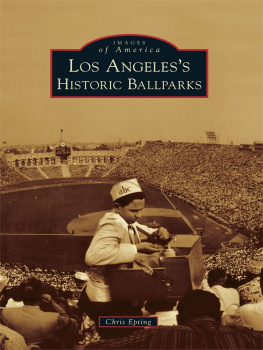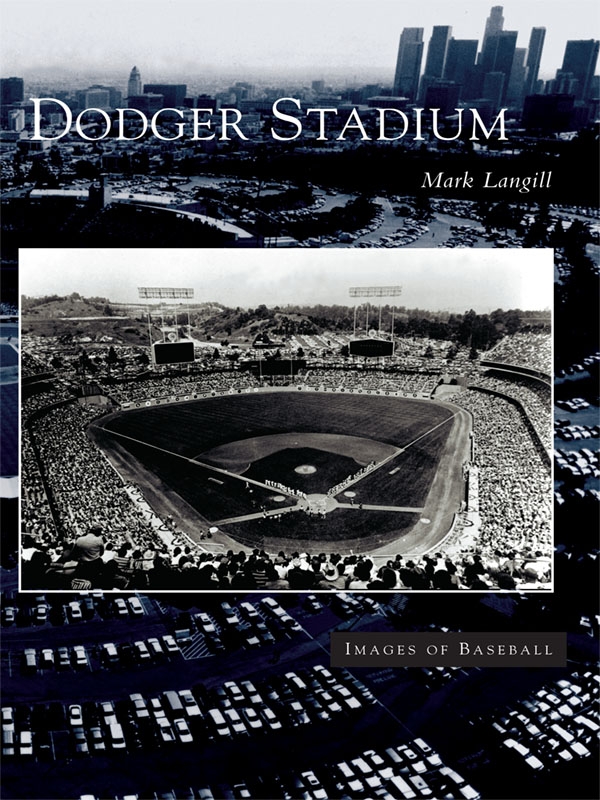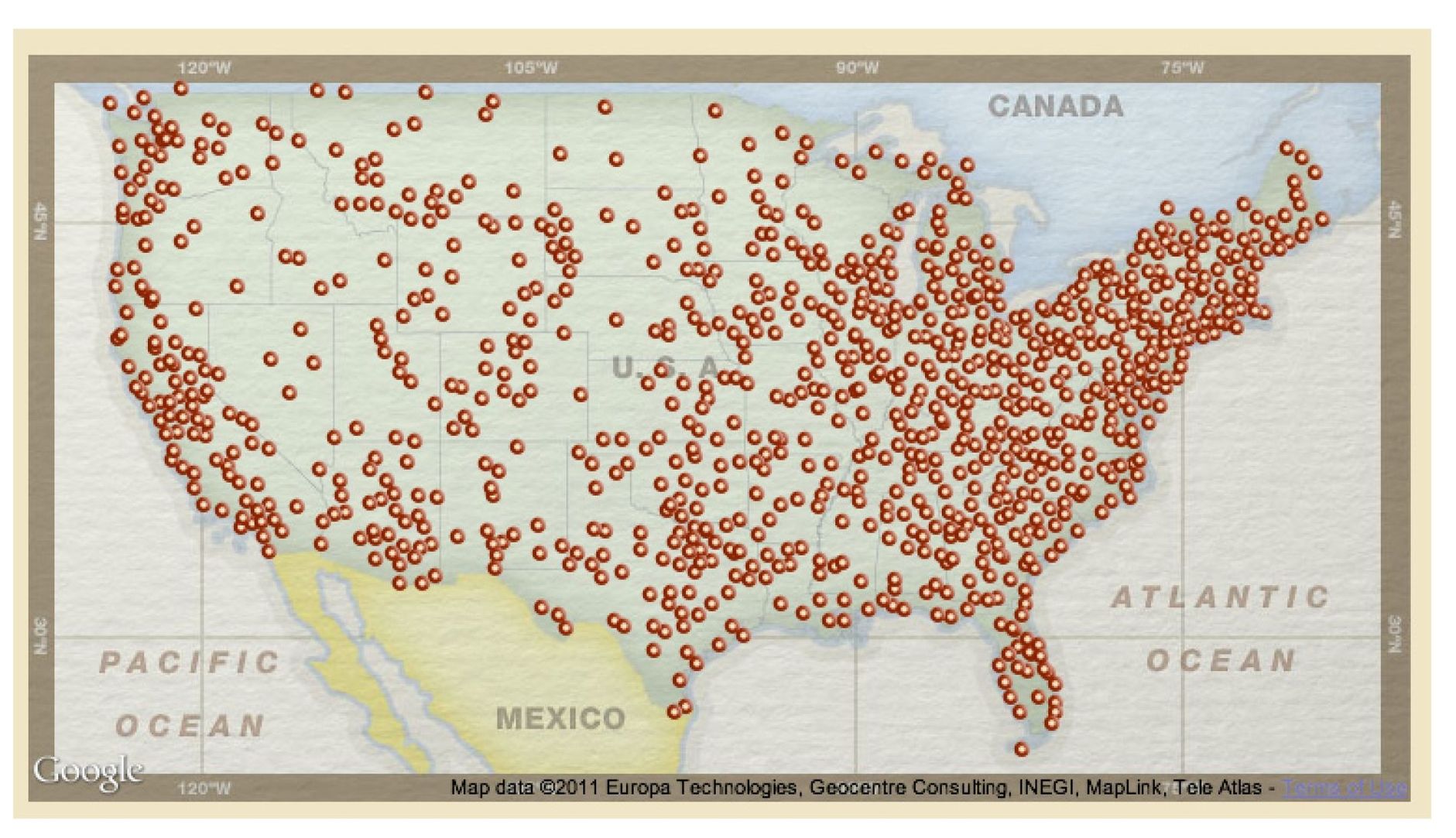ONE
Construction
The dream of a grand baseball stadium materialized amidst the frustration, inspiration, and determination of Walter OMalley, whose creation of Dodger Stadium would become a jewel in a four-decade career in the major leagues. While representing the Brooklyn Trust Company, OMalley also owned Dodger season tickets to Ebbets Field in New York during the early 1940s. When he left his successful law practice to become a vice president and general counsel for the Dodgers in 1946, OMalley wrote to New Yorkbased architect Emil Praeger and asked for ideas about enlarging or replacing our present stadium.
Thus began a 10-year campaign by OMalley to find a new ballpark for the Dodgers. Although successful on the field with either first- or second-place finishes in all but one season from 1946 to 1956, the Dodgers cozy Ebbets Field was an aging facility in the middle of a Flatbush neighborhood and had a 32,000-seat capacity and parking for 700 cars. OMalley succeeded Branch Rickey as team president in November 1950.
In a May 26, 1955 letter to architect Buckminster Fuller, OMalley outlined ideas for a potential domed ballpark, having earlier spoken to representatives from the Owens-Corning Fiberglass Corp. about working with their rigid corrugated product. OMalley envisioned a year-round facility immune to inclement weather because of a dome constructed of translucent material, which would open a new horizon for baseball. In his closing line to Fuller, OMalley wrote, I am not interested in building just another park. And OMalley hoped to stay in Brooklyn. He explored numerous plans for a site at the intersection of Atlantic and Flatbush Avenues and felt the confluence of transportation (all major subways, Long Island Railroad) to the ballpark would boost attendance and improve the surrounding areas.
Despite the desire of the city to have a major league team, Los Angeles voters on June 1, 1955 rejected a proposition using $4.5 million in bonds to fund the building of a municipal baseball stadium. OMalley saved a newspaper clipping from this topic because if the Dodgers were to relocate to the West Coast, OMalley would have to build his own ballpark.
Meanwhile, OMalley announced his intentions for the Dodgers to play seven home games in New Jerseys Roosevelt Stadium in 1956. OMalley served notice to New York officials he was serious about leaving Ebbets Field following the 1957 season. In February 1957, OMalley purchased the Chicago Cubs minor league franchise, the Los Angeles Angels, along with their home ballpark, Wrigley Field. OMalley secured the territorial rights to the Los Angeles market and had a home if the team was unsuccessful building a new stadium in Brooklyn.
During his negotiations with New York officials, OMalley also met with Los Angeles representatives after the 1956 World Series. On a May 2, 1957 helicopter tour, OMalley was shown the land where he immediately envisioned freeway access from all directions.
In September, Los Angeles agreed to exchange 300 acres of land in Chavez Ravine to the Dodgers in return for the Dodgers commitment to build a 50,000-seat stadium. The Dodgers also exchanged the deed to Wrigley Field to the city and agreed to pay a property tax estimated at $345,000. The contract also included a commitment from the city to spend $2 million on grading for the area and $2.74 million from the county for the construction of access roads.
The Chavez Ravine at one time was designated as a Federal Public Housing project in the early 1950s. When the project failed, residents were later offered independently assessed valuations for the properties and were evicted. The 169 acres had been sold by the federal government back to the City of Los Angeles in 1953 for $1,279,204 with the proviso that it be used for a public purpose.
On October 7, 1957, the Los Angeles City Council, by a vote of 10-4, adopted an ordinance that entered the city into a contract with the Dodgers. The next day, the Dodgers announced their intentions to move to Los Angeles in a historic West Coast expansion of baseball as the Giants also moved from New York to San Francisco. The Dodgers would play their first four seasons in Los Angeles at the Los Angeles Memorial Coliseum while a series of legal challenges and court battles delayed the construction project.
Chavez Ravine was a difficult site because of a network of washes, gullies, and gulches that were interlaced with hills and twisting roads. More than 8 million cubic yards of earth were moved to reshape the area. The northern face of the rock and sandstone hill was cut down and shaped into a rough amphitheater and benches were cut into the sloping floor to support the stadium foundations and pedestals. To control erosion, a two-inch-thick concrete was sprayed over the area. The 124-foot-high grandstand has three major cantilever tiers built on 78 precast bents.
The actual construction of Dodger Stadium didnt begin until after Labor Day 1960, which left only 19 months to move the remaining 5.5 million yards of dirt en route to building the stadium.
On September 3, 1959, a $646,890 contract for grading the site of Dodger Stadium was awarded by the Board of Public Works to Vinnell Constructors of Alhambra, which submitted the lowest bid among the 11 submitted and was 9.8 percent under the citys estimate. Jack Yount, the Vinnell contractor in charge who specialized in concrete projects and had experience with freeway interchanges in Southern California, never imagined his company would be asked to build the ballpark using Praegers design and OMalleys input. The specialty of the company was installing the sewers and drainage areas associated with any municipal project involving large amounts of concrete. But OMalley feared a deal with another company might lead to delays with subcontractors. He wanted Yount to personally supervise the building of the ballpark and wanted the structure made of concrete instead of steel. On August 25, 1960, OMalley signed a contract with Vinnell for the entire construction of the 56,000-seat stadium.



